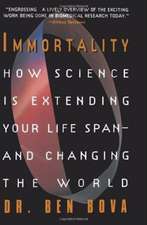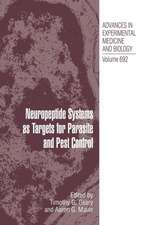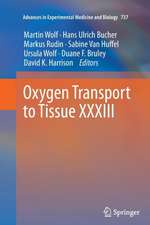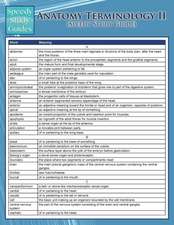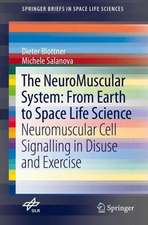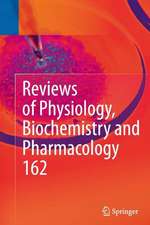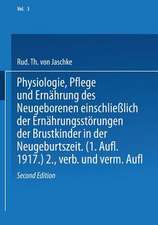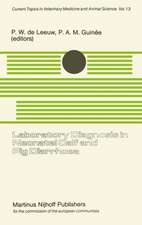Reciprocal Translation Between Pathophysiology and Practice in Health and Disease
Autor Peter B. Soeters, Peter W. de Leeuwen Limba Engleză Paperback – 6 apr 2021
With contributions from Petronella L.M. Reijven.
- Provides an overview of fundamental/foundational content and then goes on to translate the information to more clinically-oriented perspectives
- Highlights the benefit of normal pathophysiological response to stress and the misunderstandings surrounding the treatment of this response
- Explains how treatment should be adapted to support the inflammatory response and how to treat its inflammatory cause
- Includes case studies and slides
Preț: 704.14 lei
Preț vechi: 880.22 lei
-20% Nou
Puncte Express: 1056
Preț estimativ în valută:
134.74€ • 140.96$ • 111.93£
134.74€ • 140.96$ • 111.93£
Carte tipărită la comandă
Livrare economică 26 martie-09 aprilie
Preluare comenzi: 021 569.72.76
Specificații
ISBN-13: 9780128202050
ISBN-10: 012820205X
Pagini: 334
Ilustrații: 175 illustrations (75 in full color)
Dimensiuni: 191 x 235 x 20 mm
Greutate: 0.69 kg
Editura: ELSEVIER SCIENCE
ISBN-10: 012820205X
Pagini: 334
Ilustrații: 175 illustrations (75 in full color)
Dimensiuni: 191 x 235 x 20 mm
Greutate: 0.69 kg
Editura: ELSEVIER SCIENCE
Cuprins
PART I. PATHOPHYSIOLOGICAL MECHANISMS IN DISEASE1. Reciprocal translation between pathophysiology and practice in health and disease2. General principles of the repair mechanism3. Cardiovascular responses to injury4. Insulin resistance as an adaptive mechanism5. Hypercholesterolemia, harm or benefit?6. Macronutrient metabolism in starvation and stress7. The role of ectopic adipose tissue: benefit or deleterious overflow? 8. The gut/liver axis, inflammation and the pathogenesis of metabolic syndrome9. Harm and benefit of the inflammatory responsePART II. CLINICAL MANIFESTATIONS OF ADAPTIVE PATHOPHYSIOLOGY 10. The beneficial role of inflammation and metabolic cycling (Warburg revisited)11. From hepatic encephalopathy to the quality of food protein and pro-tein requirements: a serendipitous journey 12. The underlying metabolism of hypoalbuminemia and its clinical effects13. Cardiovascular stress syndromes14. The benefit of moderate hyperglycemia and hyperlactatemia in critical illness or synthesis of biomass15. Anemia as an adaptive phenomenon16. Vitamin D in health and diseasePART III. IMPLICATIONS FOR TREATMENT 17. Decreases of plasma solutes in health and disease: deficiency or resulting from changing binding proteins and distribution volume?18. Comparable metabolism in pregnancy and cancer: a universal role of the Warburg effect19. Nutritional assessment and the role of pre-existent inflammation with a bearing on COVID-1920. The harm afflicted by NSAIDs, statins and oral antidiabetics by blocking adaptive inflammatory metabolism21. Benefit and concern of ketogenic and vegan diets: a revisit to pathophysiologyPART IV. MECHANISMS PROVIDING INSIGHT IN A FEW ENIGMATIC SYNDROMES22. Pathophysiology in practice: How to manage gastrointestinal surgery in acute and elective disease conditions23. The pathophysiology underlying the obesity and plasma cholesterol paradoxes24. The final conclusion: dogma, bias and big data
Recenzii
"Reciprocal Translation Between Pathophysiology and Practice in Health and Disease brings a novel perspective, closing the knowledge gap between normal/abnormal physiology. Chapters describe the basic mechanisms underlying a disease or trauma-related response, describe consequences in practice, and provide insights on how to use information to better understand disease outcomes. Other sections explore how these responses are beneficial and driven by similar hormones and inflammatory immune cell derived modulators. This is a must-have resource for those seeking an authoritative and comprehensive understanding on how to treat the basic mechanisms underlying disease or trauma-related responses." --Anticancer Research
"This first edition has no comparators in the field and takes aim at many areas of medicine. At times, its message is somewhat convoluted - even the book and chapter titles may cause readers to step back and think. Some reorganization might improve the message, but the work stands on its own and could serve as an alternative view in certain pathophysiology and etiology dialogues. The book may not convince all readers, but the topic is very worthy for those at all levels of training and practice. It might even prompt reconsideration of certain practices, or at least prompt improved rationales and reasons for why the practices should remain." --© Doody’s Review Service, 2021,Thad E. Wilson, PhD, reviewer, expert opinion
"This first edition has no comparators in the field and takes aim at many areas of medicine. At times, its message is somewhat convoluted - even the book and chapter titles may cause readers to step back and think. Some reorganization might improve the message, but the work stands on its own and could serve as an alternative view in certain pathophysiology and etiology dialogues. The book may not convince all readers, but the topic is very worthy for those at all levels of training and practice. It might even prompt reconsideration of certain practices, or at least prompt improved rationales and reasons for why the practices should remain." --© Doody’s Review Service, 2021,Thad E. Wilson, PhD, reviewer, expert opinion

